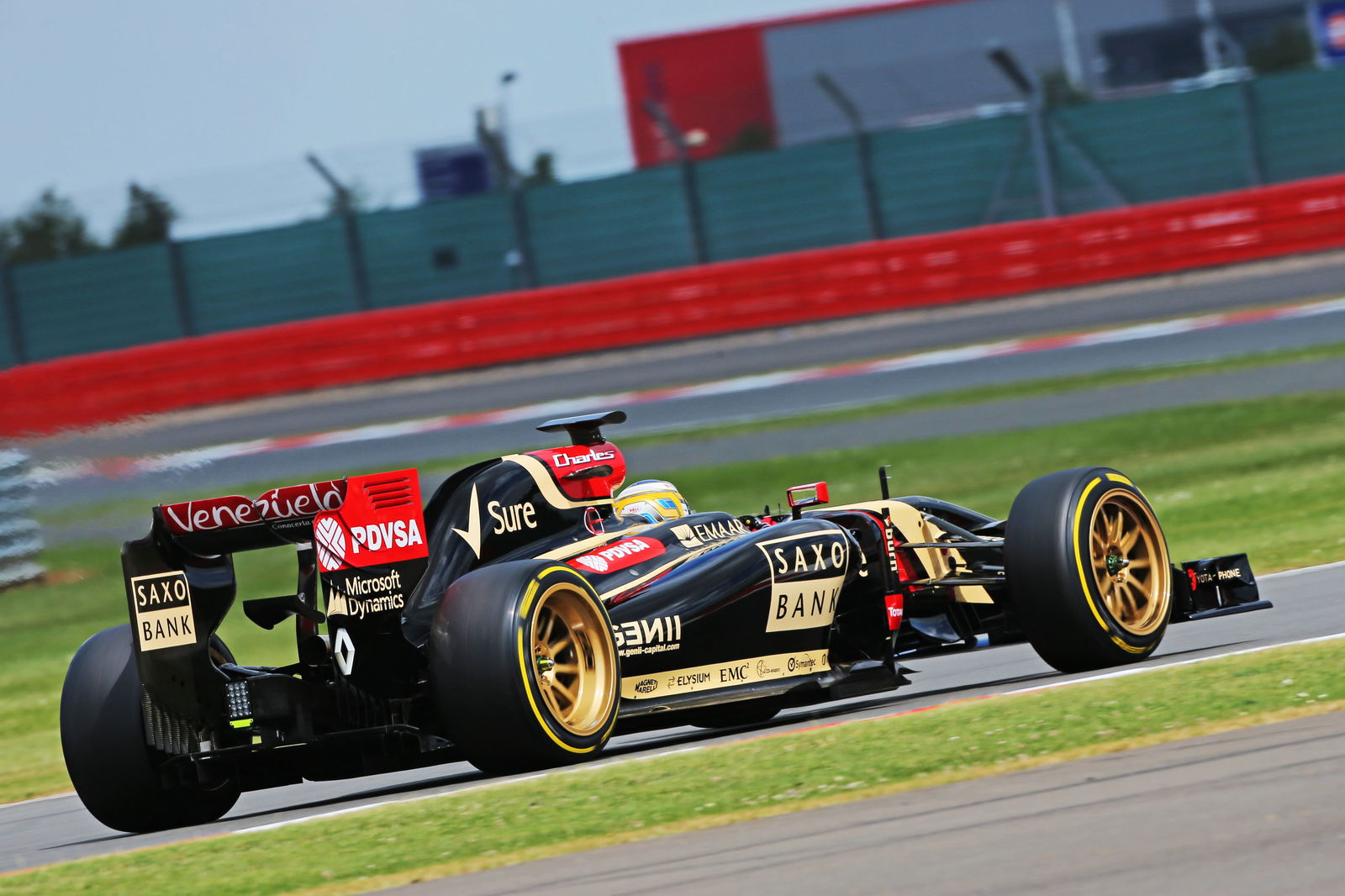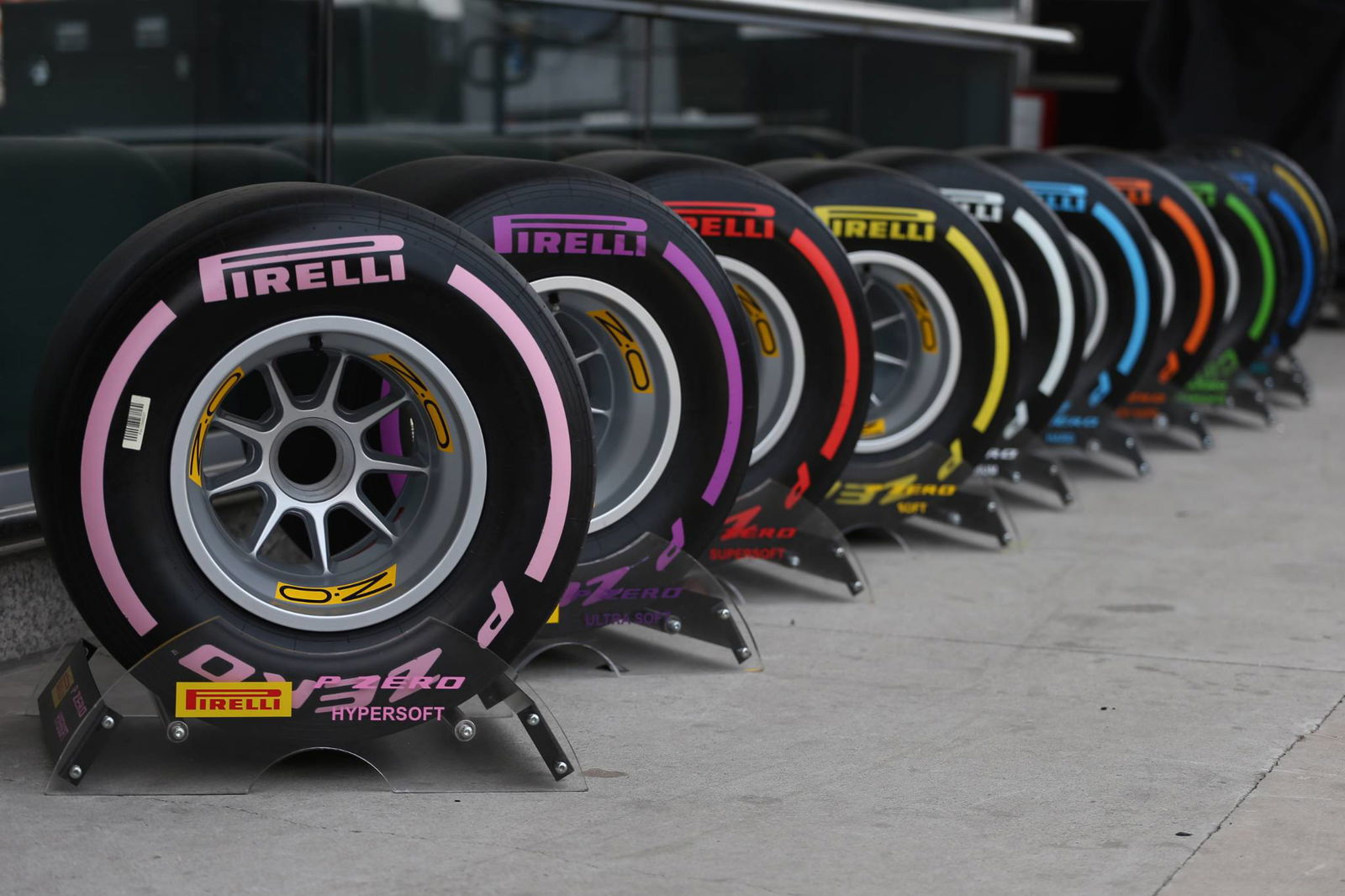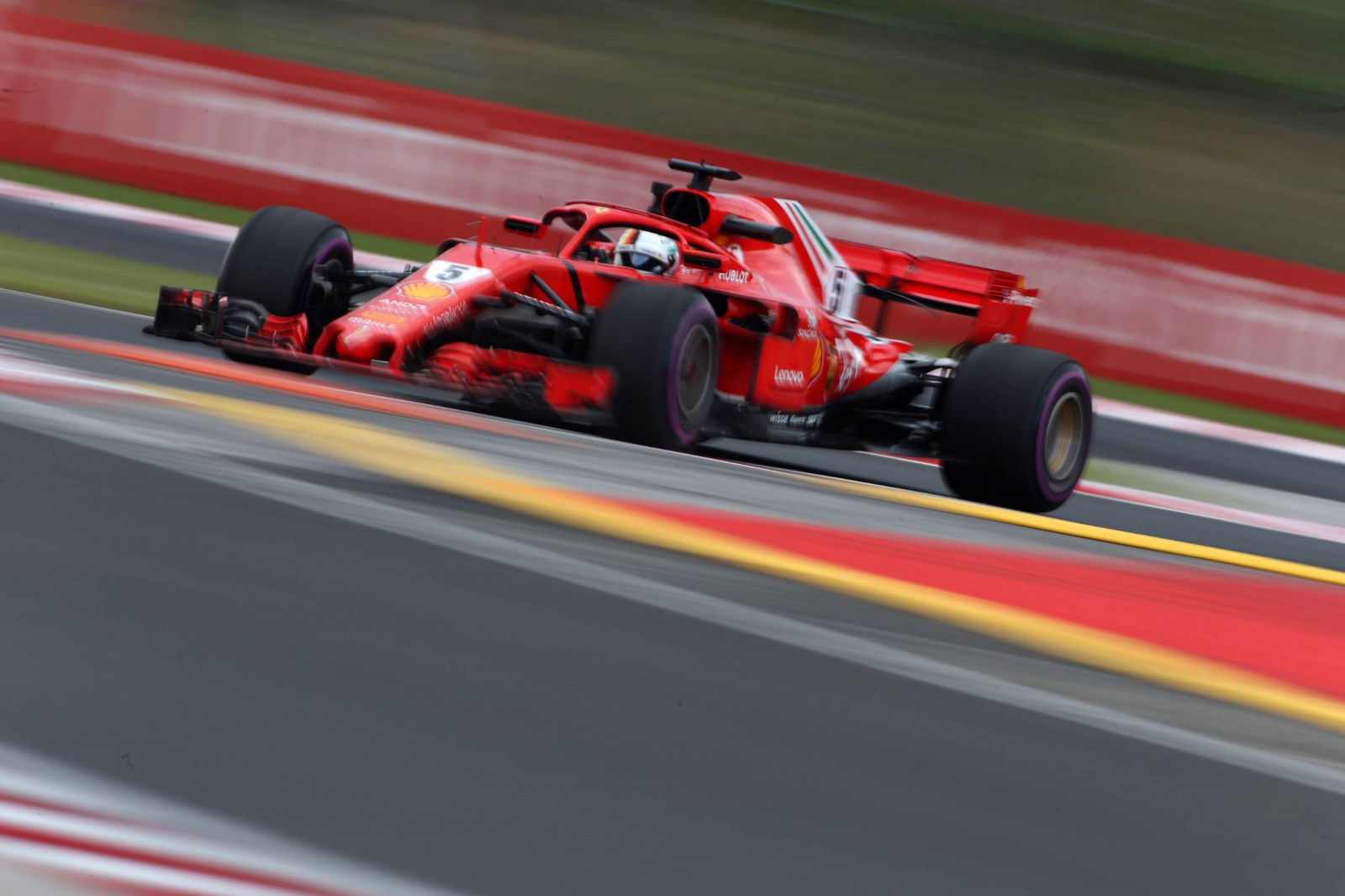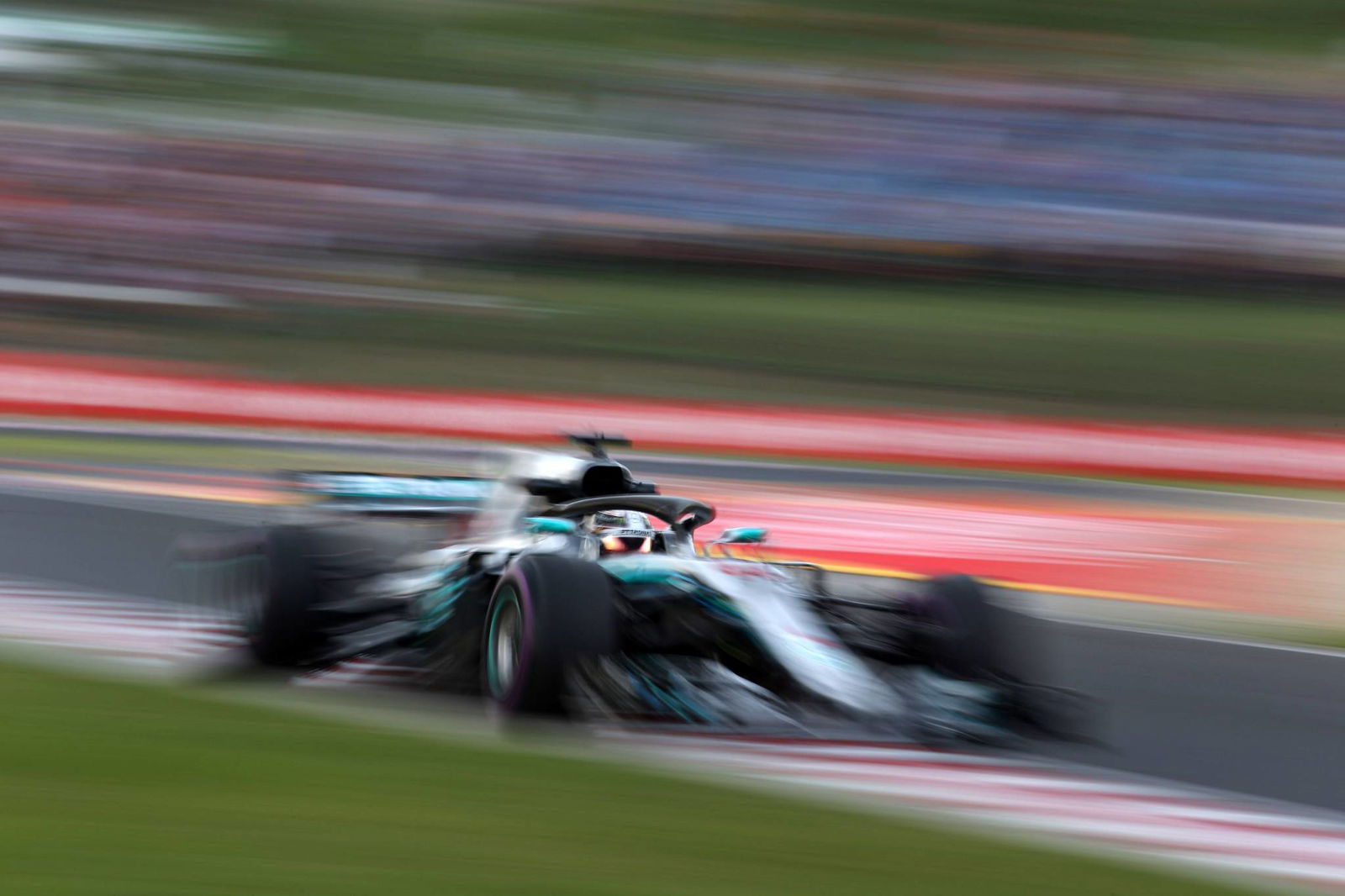What the 2021 tyre changes mean for Formula 1
2021 will represent a significant turning point in F1 history, as the sport will introduce a raft of new technical and sporting regulations. The first of the major topics – the tyres – has already been addressed following the publishing of a tender last week to supply lower profile rubber to the sport from 2020 to 2023.

2021 will represent a significant turning point in F1 history, as the sport will introduce a raft of new technical and sporting regulations. The first of the major topics – the tyres – has already been addressed following the publishing of a tender last week to supply lower profile rubber to the sport from 2020 to 2023.
The headline alteration is a jump from 13-inch diameter wheels to 18 inches, with subtle changes to the overall tyre diameter (up from 670 mm to 700-720 mm) and the front tyre’s width (down by 35 mm to 270 mm). This has been done to align F1 with road cars, the idea being that the more casual observer of the sport can spot similarities between the tyres on the fastest cars in the world and his or her tyres on their daily runaround. Alongside the other new rules expected to be announced over the next year, the changes are primarily aimed at improving the racing spectacle.
Pirelli has had a heavy influence in nurturing these new regulations, having carried out extensive testing of low profile rubber for a few years now. It is therefore more than likely that the Italian company will will remain the sole supplier for the 2020-2023 period – the supplier in question has to produce tyres of current standard for 2020 as well, which further aids Pirelli’s ambitions against any rival offers.
Michelin has been suggested as a potential rival to Pirelli’s hold on the tyre supply, having last been involved in F1 in 2006. While a shift to 18-inch wheels does fit the French marque’s push for road relevancy, matching up with the size of tyre it supplies in both Formula E and the FIA World Endurance Championship. However, the need for extensive degradation - thus not mirroring road requirements - is still a big sticking point.
Such is the impact of the changes, teams are already beginning to consider the implications on the car’s design well ahead of 2021, even if they can’t put any major programmes in place just yet. “It seems quite a way off yet, 2021, so it's in our mind,” confirmed Renault technical director Nick Chester. “But we haven't really started any serious programmes on that. It'll change the way we look at the car a bit”.
THE ENGINEERING CHALLENGES
Lower profile tyres, and subsequent larger wheels, present significant engineering challenges on both mechanical and aerodynamic fronts.
On the mechanical side, the suspension will have to be completely redesigned. The current higher profile tyres provide a substantial portion of the car’s travel: while the tyre’s intrinsic absorption and damping properties create a few setup headaches, the high profile removes the need to pack the car with larger dampers, torsion bar springs and heave elements into a crowded front bulkhead, which already houses the back of the pedal box, brake reservoirs, wishbone and wheel tether mounting points and steering rack. In addition, the weight of the wheel assembly – the unsprung mass – will rise slightly too due to the larger wheel rim, compounding the damping issue.

The FIA may move to increase the chassis template area – along with a general overhaul of the chassis – to accommodate bigger suspension componentry, as the current regulations that govern the monocoque are fairly dated, having evolved year on year since the mid-1990s.
The behaviour of the tyres under load has had a strong influence on the aerodynamic development of the cars too in recent years. As the load on the tyre increases, the deformation of the sidewall becomes more extreme, which is challenging to simulate in both computational and wind tunnel environments and often causes airflow consistency problems. In some instances a standing wave can form across the sidewall, creating oscillations across the car which disrupt the airflow further.
The floor next to the rear tyre and the rear diffuser are particularly sensitive to sidewall deformation, but the lower profile tyre should help alleviate such problems. However, as Chester alludes to, the expected aerodynamic modifications to the regulations are likely to reduce these problems anyway.
“I think the anticipation is that the diffuser will be narrower and higher, so that actually the tyre would interact with it less anyway,” he said. “So it actually might have quite a small interaction. But until we actually see a bit more, it's hard to say.”
Bodywork around the brakes – often referred to as ‘cake tins’ – will also come under the teams’ microscopes, as will the design of the wheel rim. The teams deliberately search for ways to increase the rate of heat transfer from the brakes into the rim, which in turn raises the bulk temperature of the tyre. Switching to 18 inches means that the low profile tyre is much further away from the brakes and the heat generated will dissipate into the open air more easily. Both of these items also help reduce induced drag from the tyres rotating in the open air – perhaps we should expect some extravagant designs here, should the regulations allow it, to recover lost performance.
HOW THEY WILL IMPACT THE RACING
The tender presents a fascinating engineering task for the teams, but what’s the point in it all if it doesn’t produce good racing? Aside from the technical specification of the tyres, other features within the tender are directly aimed at doing just that. The supplier must bring three compounds of tyre (Soft, Medium and Hard) to each race; these compounds are specific to the circuit, as was standard before the Pirelli era – Bridgestone, for example, produced a hard (Prime) and soft (Option) tyre for every race.
The tender has, remarkably, specified the desired performance characteristics for each compound of tyre, detailed as follows:
Hard compound: 2s degradation achieved at 22% race distance base lap time
Medium compound: 2s degradation achieved at 18% race distance 1.2s/lap quicker than Hard compound
Soft compound: 2s degradation achieved at 10% race distance 2.2s/lap quicker than Hard compound
Presumably these requirements have been calculated to provide strategy variation, the idea being that a one-, two- or three-stop race are all viable options to the team. If the supplier is able to produce these characteristics for each compound at every circuit, this will be an incredible achievement and one that we can get very excited about.

The FIA are also keen on reintroducing the ‘cliff’: a sudden deterioration in the tyre’s performance after a finite amount of laps. This has produced some tense moments over the years when a driver is eking out their rubber during the closing stages of a race, and either won in heroic fashion or slumped to the pits and finished well down the order.
Tyre blankets are also banned from 2021, bringing a significant saving on freight costs and potentially spicing up racing by delaying the tyre warm-up phase. The delay is further amplified by the lower tyre profile, with less rubber material moving laterally to generate temperature.
Will this all improve the racing? “It could do,” said Chester. “Again it'll depend very much on what the tyres are like when we actually get them. It could be tricky for the drivers at some tracks. There could be some tracks where they struggle to generate tyre temp. So it could be interesting.”
One thing that will potentially be withdrawn from the equation is a car’s bias towards a particular compound(s), unless the supplier repeats the use of a certain type of tyre for multiple races. There is a certain excitement in knowing that, say, Ferrari, are very good on the Supersoft tyre compared to Mercedes, and are likely to be quicker in certain conditions. On the contrary, we could well see more performance variation from race to race - which is probably what most fans would prefer.
Additional reporting by Luke Smith.

